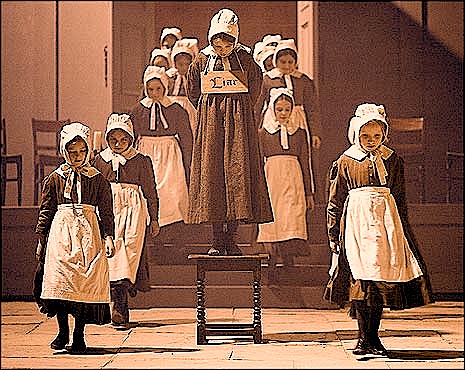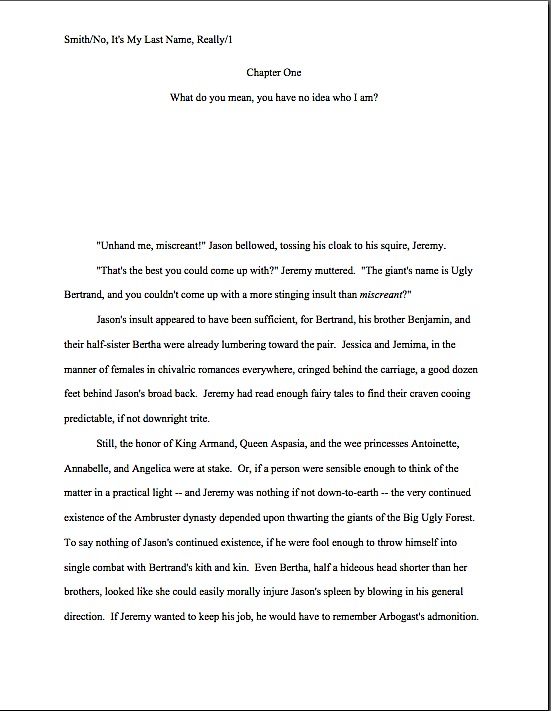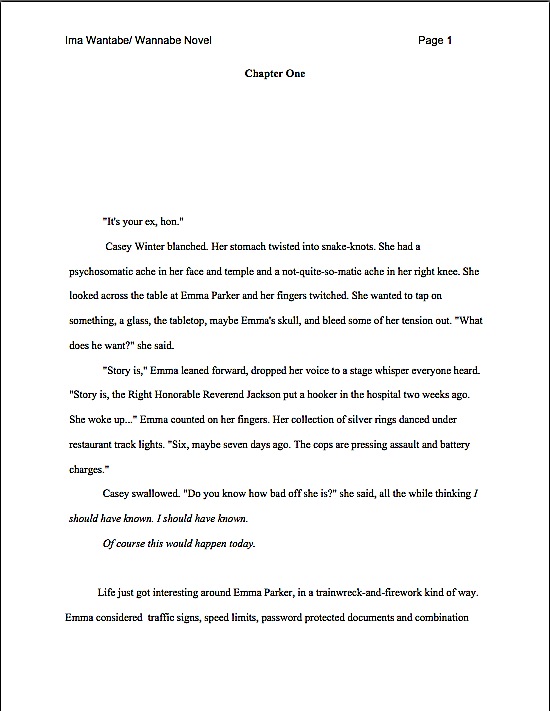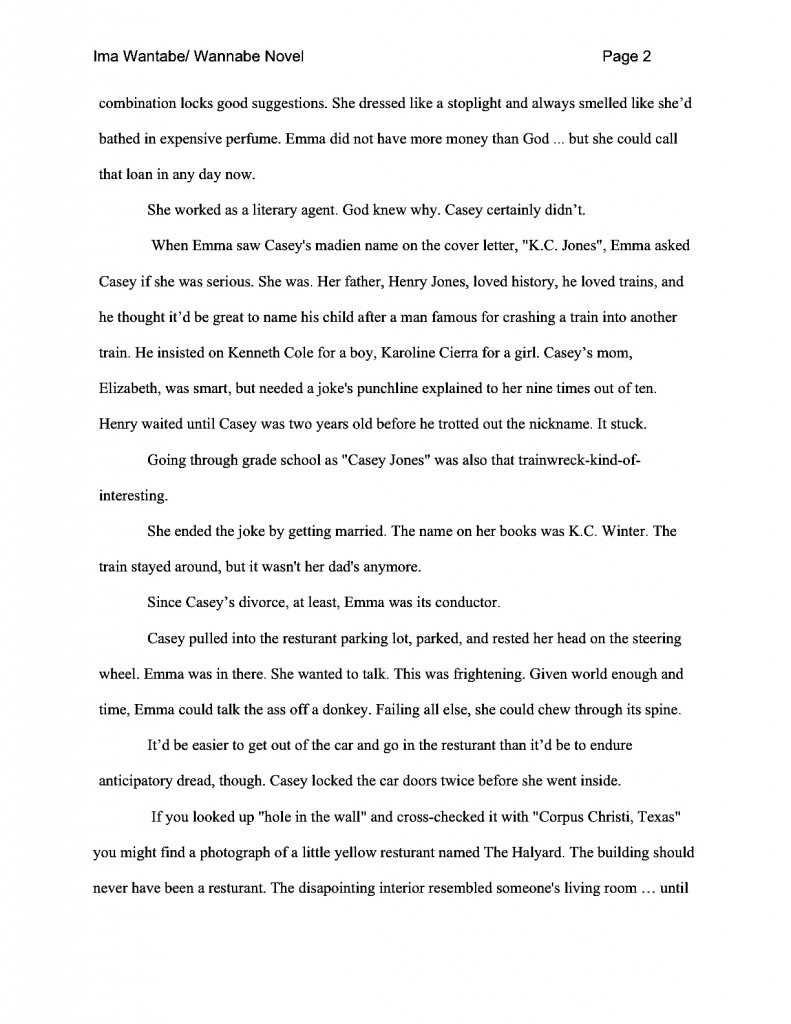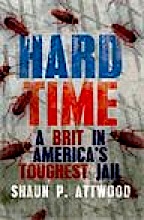
Okay, I’ll admit it: I’m rather proud of this photograph, one of the best I’ve taken in an awfully long time. Over and above the fact that I like how it turned out (especially the wave details), I shot it while flat on my back (my injured back, to be specific) at an extremely crowded beach, yet it looks as though these two fine fellows were the only beachcombers for miles around.
It just goes to show you: whether you are taking a snapshot of friends or constructing a narrative, perspective choice is key. So is knowing what to cut out — in this case, the three surfers, arguing couple, and half a dozen assorted tanners lying around just outside this shot.
Ah, once the urge to edit creeps into the soul, it’s hard not to let it creep into every aspect of one’s life. Wouldn’t those of you caught in the heat wave currently sweeping the U.S., for instance, just love to have the ability to cut from reality iterations #2 – 742 of “Hot enough for ya?” you’ve heard within the last week?
Oh, you laugh now. But just see if you aren’t reaching mentally for the Liquid Erase the next time you hear someone say it.
On the page, of course, such conversational redundancy tends to make one reach for something else — a scissors, to cut the repetitive (and thus predictable) dialogue right out of the book. Of course, Millicent the agency screener and Mehitabel the veteran contest judge don’t need to slice and dice dull dialogue literally; all they have to do is reject or disqualify it.
Not sure why characters echoing one another — which, after all, people do all the time in real life; there’s a reason most sitcoms lean so heavily on catchphrases for laughs — gets old fast on the page? Okay, let’s listen in on a representative sample:
Absent-mindedly, Barb wheeled her loaded grocery cart into the next aisle. “Oh, hi, Ellen.”
“Hello, Barb,” Ellen replied. “Hot enough for you?”
“Sure is. How are the kids?”
“Oh, fine. They grow up so fast, don’t they? How are yours?”
“Oh, I can’t complain. We sure could use some rain.”
“We sure could. Oh, here’s Ed. Hello, Ed.”
Ed was indeed slouching his way toward the canned goods. “Hi, Ellen. Hi, Barb. Hot enough for ya?”
“Hi, Ed,” said Barb. “It sure is. How’s the wife?”
“Oh, fine, fine. How’s yours?”
“Just fine,” Barb said.
“Mine, too,” Ellen added. “How are your twins doing, Ed?”
He shook his head ruefully. “They grow up so fast. Hey, here comes Jeremy. Hi, Jeremy! Hot enough for ya?”
Everyone laughed merrily. “It sure is,” Jeremy said, clutching a swiftly-melting carton of ice cream to his chest.
Had enough? They haven’t — but Millicent, I assure you, abandoned this page long ago. Why? Well, it’s just not very interesting, is it?
That made some of you drop your ice cream cones, didn’t it? “But Anne,” lovers of realism exclaim, mopping your dripping brows, “that’s how people talk in real life! You don’t seriously expect us to believe that Millicent finds realistic dialogue annoying, are you?”
Actually, yes, I do. At least the parts of real-life speech that are redundant. Or not germane to what’s going on in a scene. Or not character- or situation-revealing. Or, as we’ve seen above, just not all that exciting.
To put it as Millicent might: is it the writer’s job to be a transcriptionist, furiously scribbling down everything a real person does or might say in a particular situation — or is the goal of writing well to improve upon reality, offering the reader not merely what s/he might hear on any street corner, but dialogue that exposes emotion, creates conflict,
That immense mouthful was a rhetorical question, by the way. From Millicent’s perspective, if any given line of dialogue doesn’t either advance the plot, reveal character, increase conflict, or add some new dimension to the scene, it should go.
Yes, even if people say it all the time in real life. That’s the way the cookie crumbles, and excu-u-u-se me!
(Note to readers under 30: that last bit would amuse readers who happened to be watching American TV in the late 1970s, just as “You look mahvaleous,” might still bring a grin to viewers who recall the mid-1980s. As you will note, the phrase that had ‘em rolling in the aisles then are not particularly amusing now, but people did in fact repeat them with astonishing frequency back then. You had to be there, I guess.)
Nothing dates a manuscript so fast as TV or movie catchphrases. (”I don’t know karate, but I do know car-azy.” Anyone? Anyone? Bueller?) That may not sound like much of a problem for those of you planning to see your work in print imminently, but frankly, it’s likely to worry Millicent or Mehitabel.
Why, you ask? Because — long-time readers, feel free to sing along with me now — manuscripts take a while to make it into print. A catchphrase that’s sweeping the nation today may well be passé or even forgotten by the time a book containing it hits the shelves.
Let’s be practical for a moment, shall we? Even if a manuscript wins an agent’s heart tomorrow, the agent will probably request revisions before submitting it to agents at publishing houses. Editors’ desks are almost invariably piled high with a backlog of submissions, so again, even if it wows the first editor who reads it, she may not have time to read it for a few months. Few novel manuscripts sell on their first round of editorial submissions, so multiply the number of editors your agent wants to see it by even a couple of months, and the book may be circulating for a year or two. Then, once some lucky editor acquires it, even if he does not want revisions (which he probably will), it’s usually at least a year between contract signing and book release. Sometimes more.
For nonfiction, the timing’s even less predictable. Yes, it’s substantially less time-consuming to write a book proposal than an entire book, but once you have it in hand, all of the same time restrictions on agents and editors’ reading time still apply. And don’t forget to add in the time you will need to write the book itself after a publisher picks it up — publication contracts vary, but anywhere from six months to a year and a half is fairly standard. After that, the publisher will have to approve the manuscript (which may entail, you guessed it, more revision) before it can be placed in the print queue…and that’s not even taking into account the fact that certain types of books tend to be released at certain times of year…
Oh, and some of you are working on revising Frankenstein manuscripts, aren’t you? How long do you anticipate that will take?
Getting the picture? More importantly, are you still absolutely certain that the catchphrase that seemed so hip and trendy when you originally typed it last spring will still read as fresh when the first edition of your book first falls into grateful readers’ hands?
To compress all of this into a revision tip: unless your story is set in a specific period in the past, consider cutting current cultural references and colloquialisms. Believe it or not, the day will come — and it’s probably not all that far in the future — when teenagers will roll their eyes when adults-trying-to-be-cool say, “Whatever!”
That’s SO 2005, Grandpa.
Even if your chosen catchphrase is historically appropriate for the setting of your book (dig it, man!), keep an eye on how often it crops up in the text. Repetition is repetition, after all, and a character who repeats herself too often is, among other things, predictable.
It’s also very, very easy to go overboard with the cultural references; one too many, and your character may come across as a stereotype. It’s perfectly fine to differentiate between a pair of sisters by having one’s junior high crush be on David Cassidy, while her young sister later swooned over Shaun, for instance, but must the elder also continually hum John Denver tunes, creating macramé plant holders, and talking about Watergate while wearing her Laurie Partridge pantsuit over a burned bra as she sports a yin-yang ring to P.E. classes still unaffected by Title 9? And is it really necessary for the younger to toss her Farrah over her Leif Garrett albums while simultaneously watching the Muppets and mourning the demise of Sid Vicious?
Hands up, any of you who caught all of those cultural references. If you did, please turn to the blank-eyed person next to you and explain them. Don’t be deterred by their persistent yawns; I’m sure the young will be amused to learn what albums were.
And if your first instinct was to point out huffily that there was never actually an event where bras were burned (the cliché actually comes from the public burnings of Vietnam-era draft cards, transposed into a different social movement), or that a Leif Garrett fan would NEVER have been listening to the Sex Pistols, well, you’re right. But having a firm grip on historical realism does not give you carte blanche to start carting in cultural references by the wheelbarrow load.
I assure you, they are not indispensable. Whenever you find one in your text, ask yourself: is this detail meaningful enough to keep? Or could I convey an accurate feeling of the time and place through more unusual — and therefore less expected — means?
While you are scanning your text for redundant dialogue, catchphrases, and soon-to-be-dated cultural references, bear in mind that television and movies often shape day-to-day speech in other ways, too. Take, for instance, the standard first response upon hearing that someone has experienced bereavement: I’m so sorry for your loss.
Now, there’s nothing wrong with expressing sympathy that way, inherently, but think back a decade or two: did real people say this much before police officers on TV shows and in movies began spouting it every time they encountered a victim’s family?
Even if you want your characters to sound as though they’re playing bit parts on a Law & Order spin-off (because that’s not a cultural reference that will puzzle stumblers upon this post ten years hence), is parroting a standard impersonal phrase really the most character- or situation-revealing way those characters could respond to something as inherently dramatic as the news of a death? Isn’t saying precisely what anyone might say something of a waste of dialogue space?
I’ve said it before, and I’ll say it again: predictability is the enemy of snappy dialogue, and while the polite phrases that everybody uses are nice to encounter in real life, they can be deadly dull on the page. Compare, please, this series of events, ripped from real-life dialogue:
Shane wiped his eyes with the back of his hand. “Thank you for telling me, Sergeant Jones.”
“I’m sorry for your loss.” The officer gave a sympathetic smile. “But I’m afraid you will need to fill out some paperwork.”
“Oh, of course, of course.”
Becoming overwhelmed the midst of a seemingly endless series of questions, Shane excused himself on the pretext of wanting a cigarette. He called his boss to explain that he wouldn’t be coming to work in the afternoon, either.
“Oh, I’m sorry for your loss,” Ted said. “Is there anything I can do?”
“No, nothing.”
Two cigarette breaks, five cups of watery coffee, and a bad case of writer’s cramp later, Sgt. Jones said he could go. “The rest can wait until tomorrow.” He stood up to shake Shane’s hand. “Again, I’m sorry for your loss.”
“That’s okay,” Shane said vaguely, wondering if thank you were actually the proper response.
Just when he thought he had taken care of everything, he remembered the newspaper. Actually, his wife did. At Jennie’s prompting, he made a detour to the Tribune Dispatch Examiner Times.
“Oh, I’m so sorry for your loss,” the desk clerk said. “You’ll find the forms you need over there.”
Eloquence did not come easily. Shane crumpled the half-filled-out obituary form in his hand. “I don’t think I can fill this out right now.”
“Well, you can take it home and bring it in later.” The clerk smiled at him. “Don’t worry.”
“We’re sorry for your loss,” the receptionist called after him as he stalked out of the building.
As you may see, these characters are simply say what is socially acceptable these days. Again, people do this all the time in real life, but does it make for either exciting or character-revealing dialogue? Are at least some of these stock responses substitutes for some potentially interesting dialogue.
You be the judge — but before you decide, let me stack the deck with some evidence that this scene could have been handled to better effect.
Shane wiped his eyes with the back of his hand. “I suppose I should be grateful, Sergeant Jones.”
“Nobody likes hearing bad news.” The officer gave a sympathetic shrug. “Or what I have to say next: I’m afraid you will need to fill out some paperwork.”
“Of course,” Shane muttered. “It’s not as though I have to break the news to my great-grandmother or anything.”
Becoming overwhelmed the midst of a seemingly endless series of questions, her excused himself on the pretext of wanting a cigarette. He called his boss to explain that he wouldn’t be coming to work in the afternoon, either.
“Well, I suppose we could have somebody else rearrange the cat food display.” Ted’s tone implied that the lack of Shane’s unique stacking savvy might well send Cats R Us into immediate bankruptcy. “But get here as soon as you can.”
No, thanks: there’s nothing you can do. I’m fine, really. “I appreciate it.”
Two cigarette breaks, five cups of watery coffee, and a bad case of writer’s cramp later, Sgt. Jones said he could go. “The rest can wait until tomorrow.” He stood up to shake Shane’s hand. “I know it’s hard, but you’re doing a great job.”
“Thank you?,” Shane said vaguely.
Just when he thought he had taken care of everything, he remembered the newspaper. Actually, his wife did. At Jennie’s prompting, he made a detour to the Tribune Dispatch Examiner Times.
“Oh, God, you’re the third walk-in today.” The desk clerk pointed to a cluttered table on the far side of the room. “You’ll find the forms you need over there. The deadline for tomorrow’s edition is in ten minutes, so chop-chop.”
Eloquence did not come easily to him under normal circumstances, but with the clerk helpfully counting down the minutes like some misplaced staffer from the NASA launch command center, he found it difficult even to spell Terry’s middle name correctly. Feeling like a failure, Shane crumpled the half-filled-out obituary form in his hand and went sheepishly back to the front desk. “I don’t think I can fill this out right now.”
The clerk sighed gustily. “Well, I didn’t know the guy.”
The obituary editor caught him just as he was in the act of slamming the office door. “You can take the form home and fill it out there, you know.” He produced a fresh copy. To Shane, its very blankness was a threat. “You can bring it back whenever you want. Or,” he lowered his voice, presumably so the clerk would not hear him, “mail it in.”
Just one of a multiplicity of possibilities, of course. Frequently, too-polite interactions stifle genuine human interaction. While manners ease social tensions, drama demands conflict.
So here’s a suggestion for revising polite chatter: make at least one of the parties less polite, and see what happens. Maybe it will be interesting.
Speaking of interesting reactions, I have been hearing faint howls of protest for paragraphs on end. “But Anne,” I hear some of you protest, “that first version felt more real to me. Surely Millicent will be willing to put up with the occasional polite platitude in the interests of realism?”
Think of what you’re saying. Remember, in addition to being predictable, canned polite responses tend to be clichés. Why precisely would Millicent be inclined to skim over hackneyed phrases, except in the hope that something more original may ensue?
More importantly, why would a reader — especially if those predictable courtesies make up any or all of the dialogue on page 1? (Oh, it happens.)
Lest any of you be tempted to dismiss those questions as yet more evidence that marketing concerns are antithetical to art, let me provide you with a solid creative reason to excise the stock responses: real-life dialogue is seldom character-revealing — and thus reproducing it in a manuscript will often not convey as much about a character as writers sometimes expect.
Or, as Millicent likes to put it, “Move ON with it!”
Take, for instance, the oh-so-common writerly habit of placing the speeches of an annoying co-worker, relative, ex-lover, nasty dental receptionist, etc. into fictional mouth of a minor novel character as a passive-aggressive form of revenge. (Come on, every writer’s at least thought about it.) To a professional reader, the very plausibility of this type dialogue often labels it as lifted from real life:
“Oh, wait a minute, Gary.” Monique picked up the crumpled wad of paper before anyone else could step on it, placing it neatly on the administrative assistant’s desk.
Celeste glared at it as if it was covered in baboon’s spit. “Don’t you dare leave your trash on my desk. Do you think I have nothing to do but clean up your messes?”
“It was on the floor,” Monique stammered awkwardly. “I thought you had dropped it.”
“Don’t you give me your excuses.” Celeste grew large in her seat, a bullfrog about to emit a great big ribbet. “You walk that right over to the trash can. Now, missie.”
“But the recycling bin’s right under your desk!”
“March!”
“I’ll save you a seat in the meeting,” Gary offered, embarrassed.
Celeste turned to him with exaggerated courtesy. “How kind of you, Mr. Coleman, and what a nice tie. It sure is hot out today, isn’t it?”
Inwardly seething and repenting of her Good Samaritanism, Monique obediently took the walk of shame to the garbage receptacles on the far end of the hall. Her boss hated it when anyone missed his opening remarks.
Tell me: what about this scene would tip off Millicent that this really happened, and that Celeste is a character from the author’s past? And why would her being able to tell this be a liability? Why, in fact, would Millicent be surprised if Celeste ever showed later in the book any side other than the touchy one displayed here — or, indeed, if she ever appeared again?
Actually, that was a trick set of questions, because the answer to each part is the same: because the narrative doesn’t provide enough motivation for the intensity of Celeste’s response; fairly clearly, the writer doesn’t think that any such explanation is necessary. That’s usually an indication that the writer has a fully-formed mental image (negative, in this case) of the villain in question.
Nor does the scene achieve much than make Monique seem like the better person. But if Celeste is not important enough to the storyline to be fleshed out as a character, why should the reader care?
This, in short, is a rather subtle manifestation of the telling, rather than showing phenomenon: because the writer experienced this exchange as nasty, because Celeste was nasty, she has assumed that the reader will perceive it that way as well. But without more character development for Celeste — or indeed, some indication of whether this kind of insistence was typical for her — the reader isn’t really getting enough information to draw that conclusion…or any other. It’s just an anecdote.
Most self-editing writers wouldn’t notice this narrative lack — any guesses why?
If you attributed it to the fact that his memory of Celeste the real person is so strong, run out and get yourself a great big popsicle. (Because it’s hot where you are, isn’t it?) In his mind, the character is so well established that he can just write about her, rather than helping the reader get to know her.
The other tip-off that this was a real exchange, in case you were wondering, is that Monique is presented as a completely innocent victim of an unprovoked attack. The pure villain vs. completely blameless protagonist is a dead giveaway that dear self is concerned.
And yes, I was darned annoyed, now that you mention it. Yet because I am a good writer and most excellent human being (better than some I could name, at least), I have changed the names, the context, and several significant details to protect the guilty.
But if I crave well-deserved vindication from the total strangers who might conceivably read this tale of woe and uproar, I’m going to have to do quite a bit more character development. Not to mention integrating the incident into the storyline well enough that it’s actually interesting to read AND it advances the plot.
I also might want to keep in mind, while I’m at it, that it’s both unnecessary and annoying to keep reminding the person visibly baking in front of you that it is in fact a hot day. Or humid night, as it is right now. Excuse me while I go drink 17 glasses of ice water, and keep up the good work!
